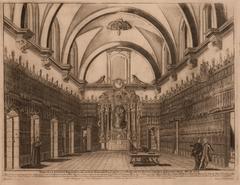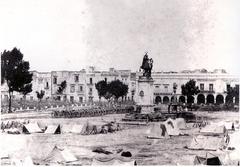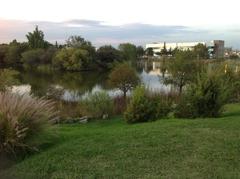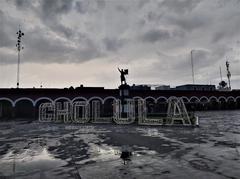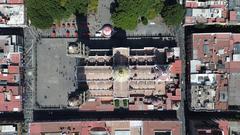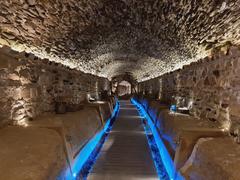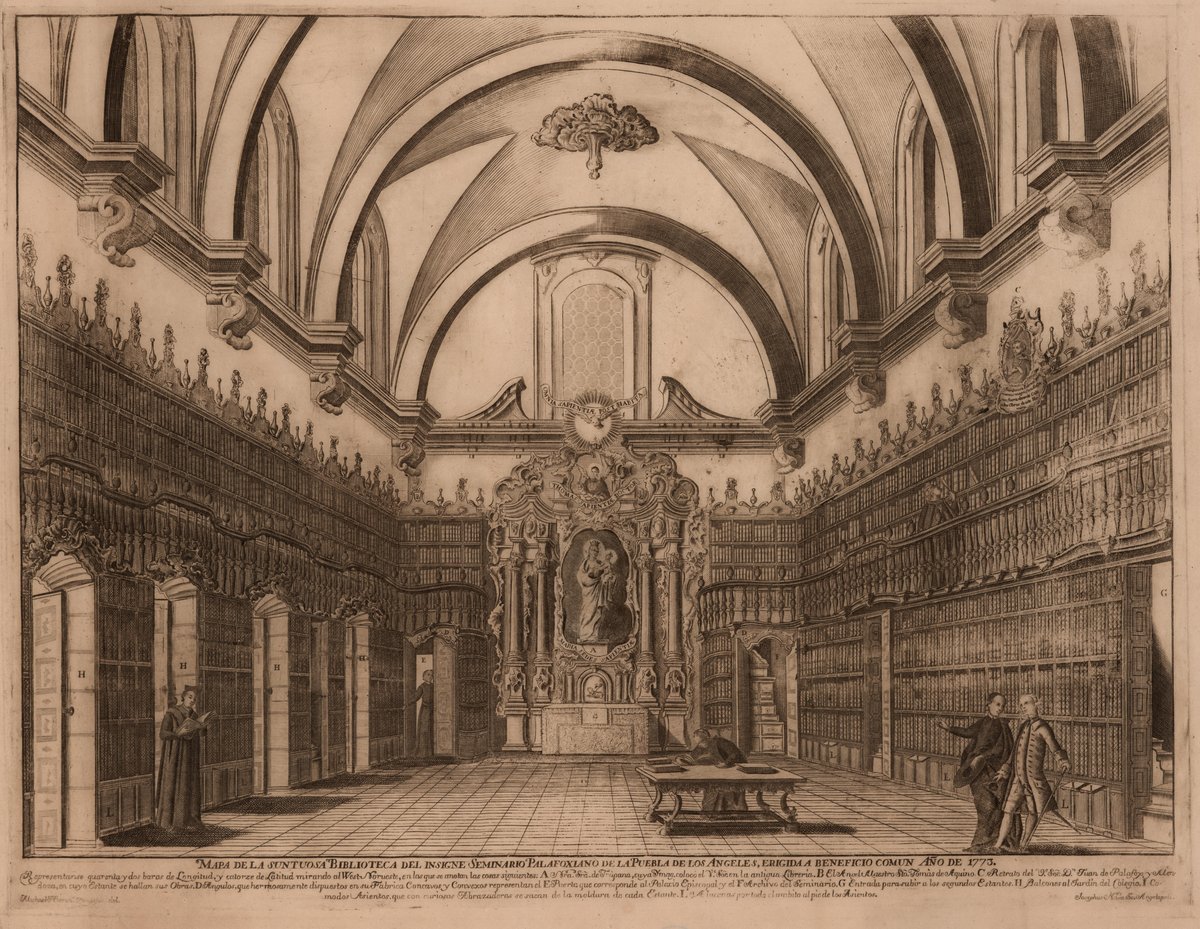
Visiting Biblioteca Palafoxiana, Puebla City, Mexico: Tickets, Hours, and Essential Tips
Date: 14/06/2025
Introduction: The First Public Library of the Americas
In the heart of Puebla’s UNESCO-listed historic center lies the Biblioteca Palafoxiana, a landmark that stands as both a monument to knowledge and a living archive of Mexico’s colonial legacy. Founded in 1646 by Bishop Juan de Palafox y Mendoza, it is recognized as the first public library in the Americas—a visionary institution established at a time when access to books was largely restricted to clergy and the elite. Palafox’s donation of his personal collection of 5,000 volumes to the Colegio de San Juan, with the stipulation that they be available to “all sorts of people,” set the foundation for democratic learning in New Spain.
Today, the Biblioteca Palafoxiana houses over 45,000 volumes spanning from the 15th to the 20th centuries, including rare incunabula, early printed books, and manuscripts that reflect the intellectual life of colonial Mexico. Its breathtaking Baroque architecture—three tiers of carved wooden bookshelves, vaulted ceilings, and a gilded altar—offers visitors an immersive journey through centuries of scholarship. In 2005, UNESCO recognized its universal significance by inscribing it on the Memory of the World Register (Wikipedia; Atlas Obscura; e-a-a.com; northabroad.com).
Quick Guide: What You’ll Find in This Article
- The library’s origins and growth
- Architectural highlights and collection treasures
- Visitor essentials: hours, tickets, accessibility, and tips
- Nearby attractions and how to make the most of your visit
- FAQs and key resources
Origins and Vision of Biblioteca Palafoxiana
Bishop Juan de Palafox y Mendoza’s bold move in 1646—donating his extensive private library to the Colegio de San Juan—marked a significant shift in the accessibility of knowledge. His expressed wish that books be open to all, regardless of status, was revolutionary for colonial Mexico. This founding spirit is immortalized in his words: “He who finds himself without books finds himself in solitude without consolation” (Wikipedia; Atlas Obscura; NBC News).
Over the centuries, the collection grew with contributions from bishops, the absorption of Jesuit libraries following their expulsion in 1767, and donations from private collectors. By the 18th century, the collection’s expansion required a purpose-built space, leading to the construction of the present library hall in 1773 (Travel by Mexico).
Stunning Architecture: Baroque Masterpiece and Preservation
The Biblioteca Palafoxiana’s interior is a marvel of colonial Baroque design. Three levels of ornately carved cedar, ayacahuite pine, and coloyote wood bookshelves line the main hall, topped by a vaulted ceiling adorned with delicate frescoes. At the far end, a gilded altar featuring a replica of the Madonna of Trapani blends religious iconography with scholarly symbolism, embodying the close relationship between faith and learning in colonial Mexico (Garden of Memory).
Large arched windows bathe the reading room in natural light, accentuating the intricate woodwork. The practical aspects of its design—thick walls, high ceilings, and an elevated location—also help preserve the fragile volumes housed within. Restoration efforts focus on authenticity, maintaining original materials and craftsmanship to ensure the library’s historic character endures (e-a-a.com). Its inclusion in the UNESCO Memory of the World Register underscores its value as a global cultural treasure.
Collection Highlights: Rare Books and Intellectual Riches
With over 45,000 volumes, the Biblioteca Palafoxiana’s collection is a window into centuries of intellectual history (Atlas Obscura; The Mexican Travel Guide). Notable holdings include:
- Incunabula: Nine books printed before 1501, such as the 1493 Nuremberg Chronicle.
- Scientific Treasures: Andreas Vesalius’s “De humani corporis fabrica” (1543), an early anatomy text.
- Legal and Religious Works: Early Bibles, the infamous “Malleus Maleficarum,” and codices illustrating colonial law.
- Multilingual Manuscripts: Works in Latin, Spanish, and indigenous languages, reflecting the region’s diversity.
- Pamphlets and Broadsheets: Documents essential to understanding colonial life in New Spain.
Collections are arranged by subject across the three levels, from religious texts and theological treatises to chronicles, science, and the arts (EscapetoMexico; Palafoxiana Official Site).
Visitor Essentials: Hours, Tickets, and Accessibility
Hours and Tickets
- Tuesday–Sunday: 10:00 AM–5:00 PM (closed Mondays and public holidays)
- Admission: 40–50 MXN (approx. $2–2.5 USD); discounts for students, teachers, seniors, and children
- Free/discounted entry: Often available for Puebla residents or Mexican nationals on Sundays—check the official website for updates
Accessibility
- Wheelchair access is available at the entrance and main areas, with some limitations in historic sections due to building design.
- Facilities for visitors with disabilities include accessible restrooms; contact the library in advance for specific needs.
Guided Tours
- Offered daily in Spanish and English, lasting 30–45 minutes.
- Advance booking recommended, especially for English tours or groups.
- Tours provide insight into the library’s history, architecture, and collection.
Photography and Conduct
- Non-flash photography is permitted; flash and tripods are prohibited.
- Visitors are asked to maintain a quiet, respectful atmosphere.
Location
- Address: Av. 5 Oriente 5, Centro, 72000 Puebla, Mexico (northabroad.com)
- Centrally located, within walking distance of the Zócalo, Puebla Cathedral, and Amparo Museum.
Enhancing Your Visit: Layout, Atmosphere, and Facilities
Upon entering, you’ll be greeted by soaring bookshelves, sunlit arched windows, and the tranquil ambiance of a centuries-old study. The main hall is accessible to visitors, with upper galleries typically off-limits to preserve the collection. Protective glass cases display the rarest works, and a small gift shop offers book-themed souvenirs (myglobalviewpoint.com).
Restrooms are available within the Casa de la Cultura, and basic accessibility features (ramps, elevators) are in place. For a complete cultural experience, pair your visit with the nearby Cathedral, Amparo Museum, Calle de los Dulces, and artisan markets.
Must-See Highlights and Photography Spots
- The Three-Tiered Bookshelves: Capture the grandeur from the central aisle or balcony.
- The Gilded Altar: The Madonna of Trapani replica is a focal point.
- Ceiling Frescoes and Woodwork: Best viewed in natural morning light.
Early weekday mornings are ideal for peaceful visits and optimal lighting.
Educational Programs and Research
The Biblioteca Palafoxiana is not only a museum but also a center for research and learning. Educational workshops, temporary exhibitions, and collaborations with universities provide opportunities for deeper engagement. Researchers may request special access to consult specific materials, subject to preservation guidelines (WroteTrips; Mexico Travel Secrets).
Frequently Asked Questions (FAQ)
Q: What are the official visiting hours?
A: Tuesday–Sunday, 10:00 AM–5:00 PM. Closed Mondays and public holidays.
Q: How much is admission?
A: 40–50 MXN, with discounts for students, teachers, seniors, and children.
Q: Are guided tours available in English?
A: Yes, but advance booking is recommended.
Q: Is the library wheelchair accessible?
A: The main areas are accessible, but some historic sections have limited access.
Q: Can I take photos inside?
A: Yes, non-flash photography is allowed.
Q: Where can I buy tickets?
A: At the entrance; check the official website for updates on online sales.
Q: Are children welcome?
A: Yes, but they should be supervised and respectful of the collection.
Practical Tips for Your Visit
- Arrive Early: Weekday mornings are quietest.
- Travel Light: Large bags may need to be checked.
- Language: Most signage is in Spanish; English tours are available.
- Public Transport: Buses, taxis, and ride-shares provide easy access to the historic center.
- Combine Attractions: Make a day of it by visiting the Cathedral, Amparo Museum, and local markets.
Enduring Legacy and Cultural Impact
The Biblioteca Palafoxiana is more than a historic site—it is a living testament to the democratization of knowledge in the Americas. From its revolutionary founding to its recognition by UNESCO, the library continues to inspire scholars, travelers, and locals alike. As a cornerstone of Puebla’s cultural identity, it bridges past and present, offering a unique experience for anyone seeking to immerse themselves in Mexico’s intellectual and artistic heritage (Palafoxiana Official Site; Atlas Obscura; northabroad.com).
Plan Your Visit and Stay Connected
For current hours, ticketing, and special events, always consult the official Biblioteca Palafoxiana website or the Casa de la Cultura portal.
Download the Audiala app for guided audio tours, cultural updates, and exclusive offers on Puebla’s heritage sites. Follow us on Facebook, Instagram, and Twitter for more tips and inspiration.
Sources
- Wikipedia
- Atlas Obscura
- Palafoxiana Official Site
- e-a-a.com
- northabroad.com
- Travel by Mexico
- The Mexican Travel Guide
- EscapetoMexico
- Garden of Memory
- NBC News
- WroteTrips
- Mexico Travel Secrets
- myglobalviewpoint.com
- Casa de la Cultura
